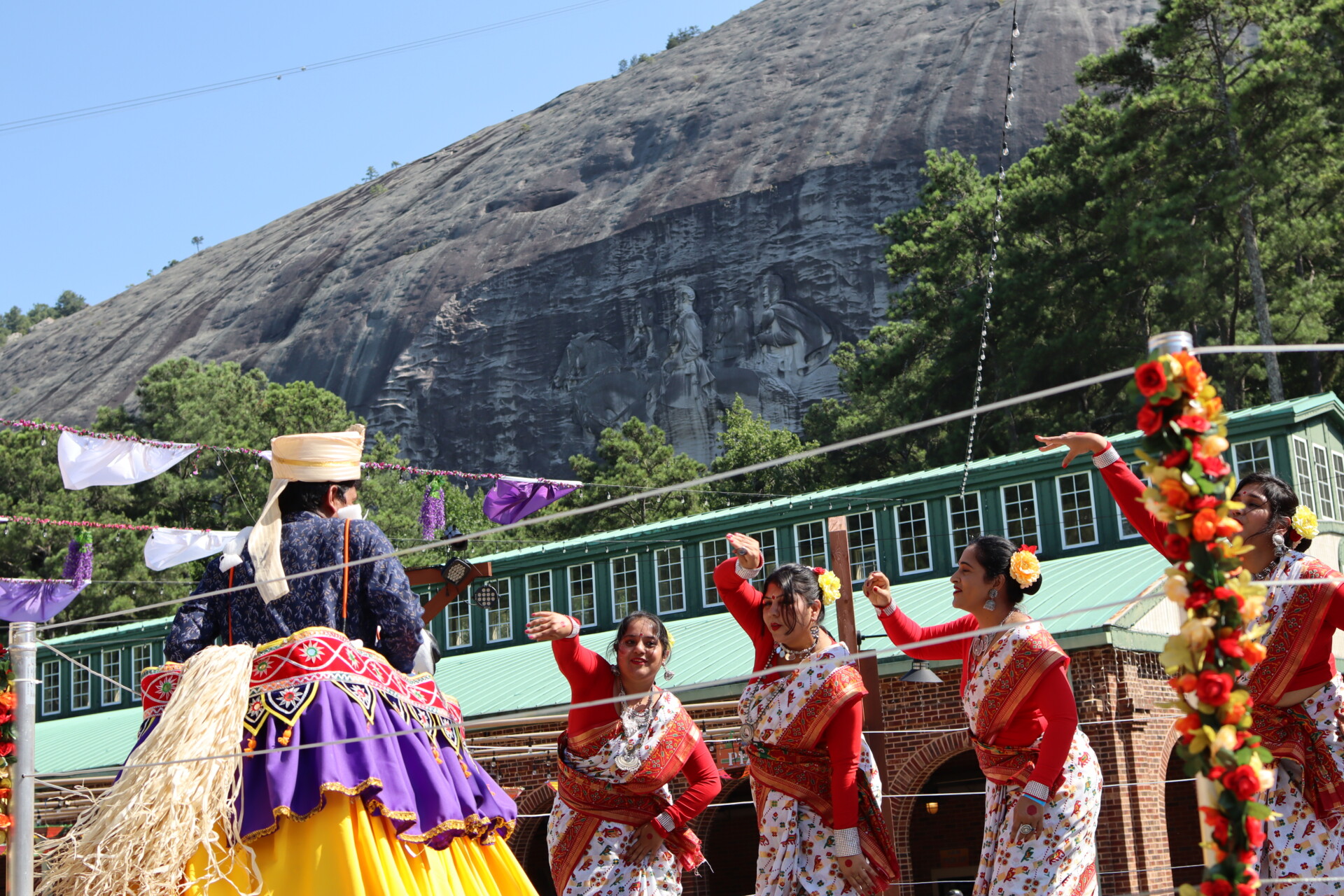East of Atlanta sits the largest Confederate memorial ever built. On the side of Georgia’s Stone Mountain is a massive bas-relief sculpture of Jefferson Davis, Robert E. Lee and Thomas “Stonewall” Jackson, three of the Confederacy’s most important officers. The carving was the work of a trio of sculptors, including Gutzon Borglum, who had also worked on Mount Rushmore.
The monument was long planned as a tribute to the “Lost Cause” — the narrative that the South had been deeply wronged by the federal government during and after the Civil War. The Ku Klux Klan picked the location as the site of its 1915 refounding or revival; in November of that year, a group of white supremacists lit a burning cross atop the mountain.
When the sculpture was finally completed in 1972, it served as a humiliating reminder for many Georgians, especially Black Georgians, of how many in the state had continued to resist civil rights for several decades after the end of the Reconstruction era, which lasted from 1865 until 1877.
But during one humid August night in 2024, the mountain served a different purpose: bringing people together. As part of an Indian-American festival dubbed “Colors of India,” an armada of drones took to the sky as regional music regaled hundreds of onlookers. The drones arranged themselves into cultural icons from India, including Mahatma Gandhi, whose visage was projected over that of Davis, Lee and Jackson.

At one point, the drones darted from corner to corner to form the images of a Christian cross, an Islamic crescent moon and the Hindu trishula, representing three of the great world religions that are found in India.
The idea of using the largest Confederate memorial in the United States to bring the local Indian community together came from Sunil Savili, the founder of Indian Friends of Atlanta (IFA), which hosted the festival. Savili came to the U.S. from India more than two decades ago. After establishing himself by working in the convenience store business, he eventually found enough financial success to start thinking about more than himself. He looked out at the population of Indian Americans in Georgia — which IFA then estimated to be about a quarter-million strong — and noticed that many of them had segregated themselves by caste or religion. He founded IFA to unite those groups and hold events like this one.
When I asked him how he felt about holding the event at a place the KKK had once made their rallying point, he spoke with pride about the racial progress he had seen over the years. “The world is changing. You know, it’s no longer people can say, ‘Hey, this is my place, this is my country, this is my city,’” he told New Lines.
Far from seeing Georgia as a place held back by its Confederate and Jim Crow past, Savili said that he doesn’t regularly experience racism, although he acknowledged that incidents of racial discrimination do persist. But he emphasized that coming here had allowed immigrants like him to find relative tolerance and coexistence, compared to what he left at home in India. “You compare with India, Pakistan, any other country you see, hardly there is anything [happening] to anybody,” he said.
The thousands of Indian Americans who gathered at the base of Stone Mountain to celebrate diversity rather than supremacy represented the paradox that sits at the heart of modern Georgia.
It’s a state where it’s not unusual to see a Confederate flag on a pickup truck parked next to an electric car with a Kamala Harris bumper sticker. The governor is an anti-abortion Christian Republican, while both senators are liberal Democrats — one a Jewish millennial and the other a Black preacher who serves as senior pastor at the Rev. Martin Luther King Jr.’s historic Ebenezer Baptist Church.
The fulcrum of the social and political change that brought these men to power is metro Atlanta, the rapidly diversifying suburbs that border the state’s capital city, where white people and minorities, conservatives and liberals, retired suburbanites and young urbanists, transplants and natives are learning to build new types of communities together.
The evolving metro Atlanta area is not only helping to create a new Georgia, but its demographics increasingly resemble national trend lines — suggesting that if one wanted a road map for what the country might look like in the future, a close look at the Peach State might offer some clues.
One of the suburban Atlanta counties that has seen the most dramatic political and cultural transformations is Cobb. Located northwest of the city, Cobb was once one of the epicenters for the so-called Republican Revolution of the 1990s, in which the GOP regained control of both the U.S. House of Representatives and the Senate for the first time in 40 years.
The leader of that “revolution,” former U.S. House Speaker Newt Gingrich, hailed from Cobb County. Other powerful Republicans, like President Donald Trump’s former Health and Human Services Secretary Tom Price, represented parts of the county while they served in Congress. In 2004, when President George W. Bush sought reelection, Cobb was a pushover for the GOP. He won almost 62% of the vote there. Mitt Romney, the Republican nominee in 2012, won comfortably with almost 56% of the vote.
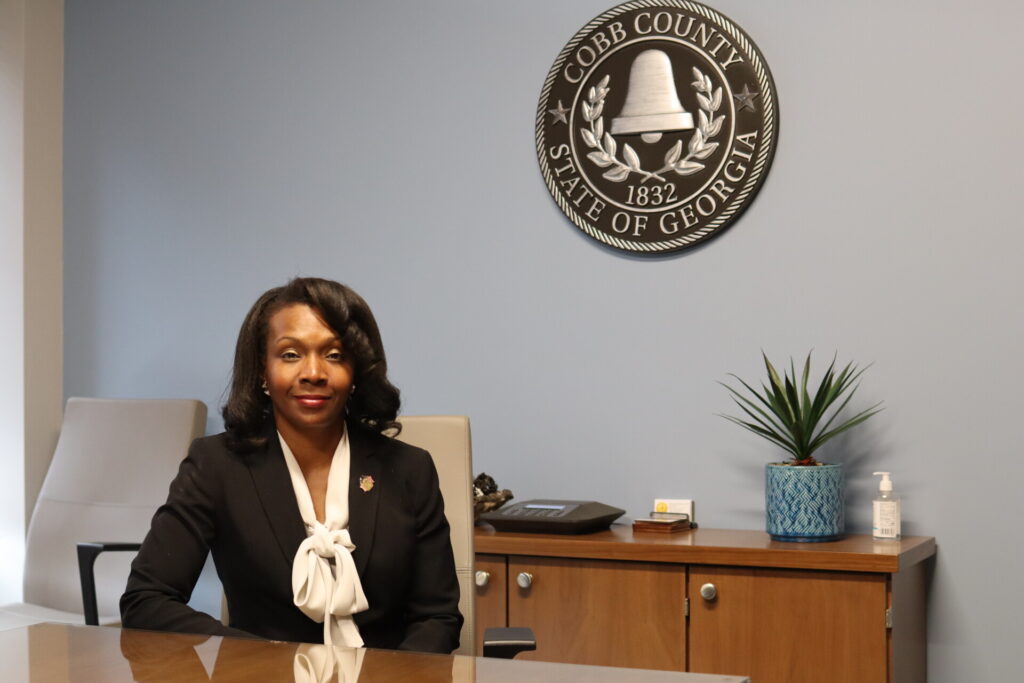
One woman who needed no reminder of just how conservative the county could be was Lisa Cupid. In 2015, she was the sole Democrat and African American serving on the five-member Cobb County Board of Commissioners. Late one night, as she was out studying for an exam, Cupid was tailed by an unmarked car. Fearing for her life, she ended up calling the police.
It turned out the car she called the police on was itself driven by a police officer. She had been tailed in what was likely an act of racial profiling. But her fellow commissioners — all white Republicans — expressed no sympathy when she recalled the tale. “I don’t call it profiling,” one commissioner said. “I call it good police work.”
While much of the country was finally taking a look at police brutality and mistreatment of African Americans by law enforcement, Cobb appeared to be stuck in a time warp. “Backing the blue” at any cost was more important than making sure a colleague was not mistreated.
But a year later, in 2016, a sign arrived that Cobb would not always be such a conservative county. Hillary Clinton narrowly carried the county over Trump, winning 48.8% of the vote. Two years later, Democratic gubernatorial candidate Stacey Abrams won just over 54% of the vote in the county. While Clinton and Abrams still went on to lose their respective elections in the state, Joe Biden won Cobb with just over 56% of the vote and carried the state’s electoral votes in the 2020 election.
While the nation’s eyes turned to Biden’s shocking win in Georgia, back home in Cobb, the county government saw its own transformation. Cupid, who was once the lone Democrat and minority on the county commission, was elevated to the position of board chair after her party won a majority of seats in the body.
Cobb’s transformation from conservative bastion to Democratic beachhead was powered by changing demographics. Throughout the early 2000s, Cobb County was seen as the quintessential white, suburban upper-middle-class area. In 2010, almost 58% of the population was non-Hispanic white, while the Black population was 24%, the Latino population around 12% and the Asian population just over 4%. But by 2024, Georgians who identified as non-Hispanic whites made up just 48% of the county, while just under one-third were Black, 15% Hispanic and 6% Asian.
In an interview with New Lines, Cupid credited the quality of life in Cobb for the booming population.
“I think people in general have an interest in the things that attract all people to strong communities like Cobb. We have good schools, we have well-paying jobs. We have beautiful communities, natural amenities,” she explained, adding that the county has also become a destination for people who want proximity to Atlanta, which is a quick commute from the area.
Cupid had moved to the Cobb area herself from Michigan in the 1990s, having first arrived in South Cobb, the poorer part of the county. She had represented constituents who lacked the same access to transportation that prosperous residents in other parts of the county had.
One incident that deeply impacted her occurred before she joined the board of commissioners. A Cobb County woman was struck by a car while crossing the street, only to be hit with a jaywalking charge afterward. “In Cobb, traditionally, the car is king. And we think about how we can move cars rapidly through as quickly as possible, but we don’t think how people who depend on their own two feet are moving through,” she said. “So … there’s a shift to me to think about the people in Cobb who only had their two feet to get through the county.”
Cupid and the other Democrats on the board have pushed hard for increased support for transit and walkability, as well as for zoning for multifamily and affordable housing so that more people of modest means can come to live in Cobb.
But in doing so, they’ve found themselves facing considerable opposition from the county’s more conservative residents, who have argued that Cupid and the Democrats are trying to transform this once-quiet suburb into something else entirely. When Cupid and her allies on the county commission proposed a 1% increase in the sales tax to finance an expansion in public transit, those residents leaped into action. They packed town halls, handed out oppositional yard signs and voiced their outrage throughout the local media.
One of the leading opponents of the proposal was Lance Lamberton, who serves as the chair and founder of the Cobb Taxpayers Association. “Cobb is not New York City,” read the headline in a local newspaper opinion piece he wrote, denouncing proposals to expand transit.
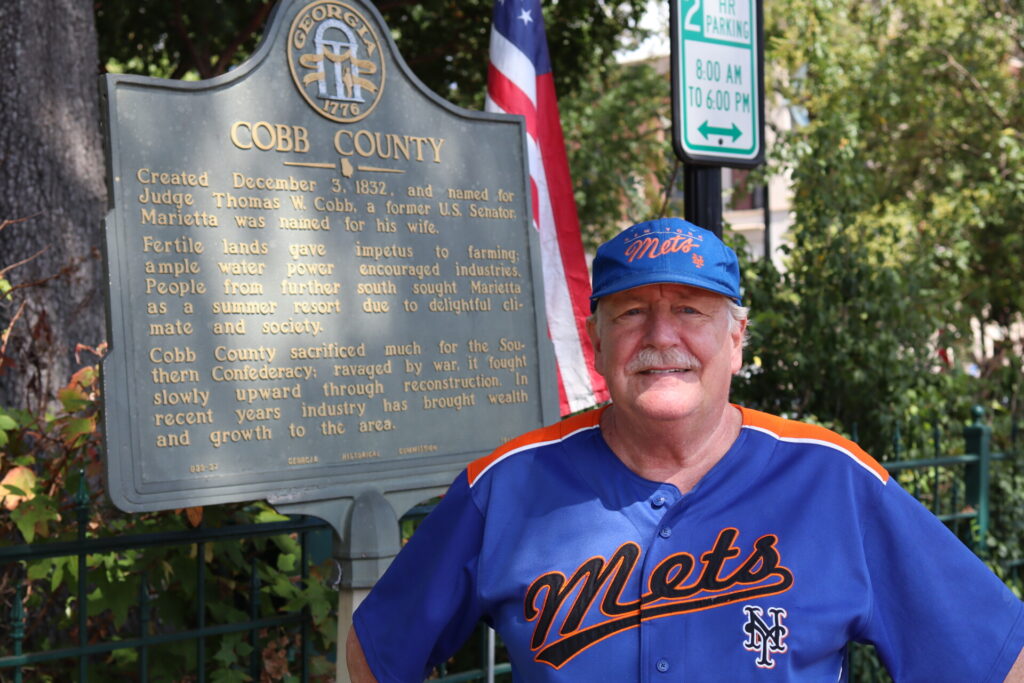
And if anyone would know what New York City is like, it would be him — he grew up in Manhattan. In an interview with New Lines, he explained why his childhood in the Big Apple didn’t mean he wanted the same for his home in Cobb. “That was great growing up in [my] 20s. The girls, the clubs, the nightlife — that was great,” he said.
But that’s not the life he and other traditionalists want to live in Cobb today. He arrived in Georgia over two decades ago and came to like the laid-back life in the Atlanta suburbs. After the Democrats took over the county, he started to wonder if that life was under attack. And he had the political skills to fight back — in his younger years, he had worked as a staffer in President Ronald Reagan’s White House.
In his view, Cupid is promoting the urbanization of Cobb County, something he thinks would fundamentally disrupt life there. “The single detached home is the predominant residential model for the county, and I hate to see that being taken over by dense apartments all over the place. [That] brings in less stable elements to the community,” he told me. “More transients. Transients are not necessarily bad people, but they don’t have the same investment in the community for its long-term well-being. And so we want to preserve what’s good.”
When it came to mass transit, he was even more adamant in his opposition, proposing that it was a political scheme. “I personally think the hidden political agenda behind this [transit proposal] is to increase urbanization [and] therefore solidify the Democratic base,” he said.
Lamberton and the conservatives won the argument against higher transit taxes. When Cobb voters went to the polls in November, they defeated the tax hike.
What was most telling about the vote was the margin. Only 42% of Cobb County voted for Trump in November’s election, but over 62% voted against the transit measure. That demonstrates that Lamberton’s views are not only held by conservative Republicans or white baby boomers; plenty of minority residents have moved into the county, bought spacious suburban homes and nice cars, and adapted to the same lifestyle that the Gingrich Republicans once revered.
Yet there are signs of a progressive insurgency beneath the moderation on the surface of Georgia politics. While Georgia’s population is growing as people from across the country flock here for affordable housing, a robust job market and a moderate political climate, some Georgians continue to be left behind.
Child poverty remains above the national average. The percentage of its population with health insurance ranks near last in the country. Although metro Atlanta’s homes are affordable to newcomers from the coasts, many longtime Georgians are being squeezed by higher housing costs as more people move in.
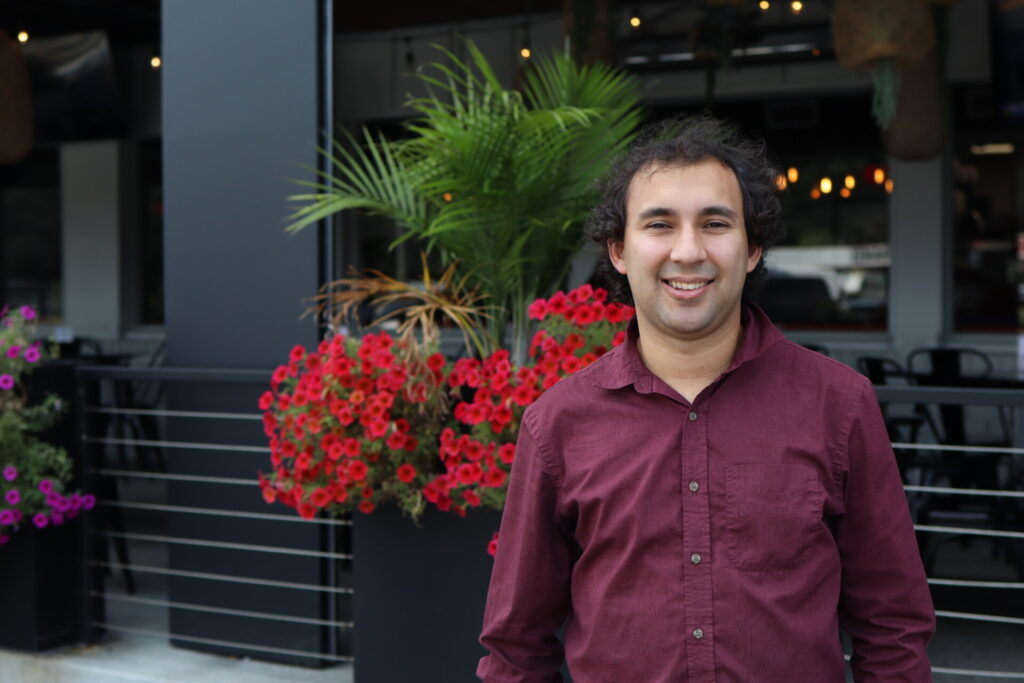
That’s something that Gabriel Sanchez wants to change. He was elected to the Georgia House of Representatives as a Democrat from Cobb County in 2024, while still in his 20s. The son of Colombian immigrants, he unseated a Democratic incumbent named Teri Anulewicz by, among other things, organizing disaffected Latino voters in the district.
While Cupid and many state Democrats are touting a moderate message, seeking to court Republicans, Sanchez is more unabashedly progressive. A self-proclaimed democratic socialist, he wants to repeal Georgia’s ban on rent control, guarantee paid time off and parental leave for workers, establish a minimum $20 hourly wage and increase taxes on the superrich.
He sees Cobb’s political transformation as part of a bigger class struggle. “There’s an old guard of wealthy, mostly white people, a lot of old money, who are used to doing whatever they want and getting away with it, but now suddenly they have to start sharing those resources with others who are less fortunate,” he told New Lines. “And they don’t like that.”
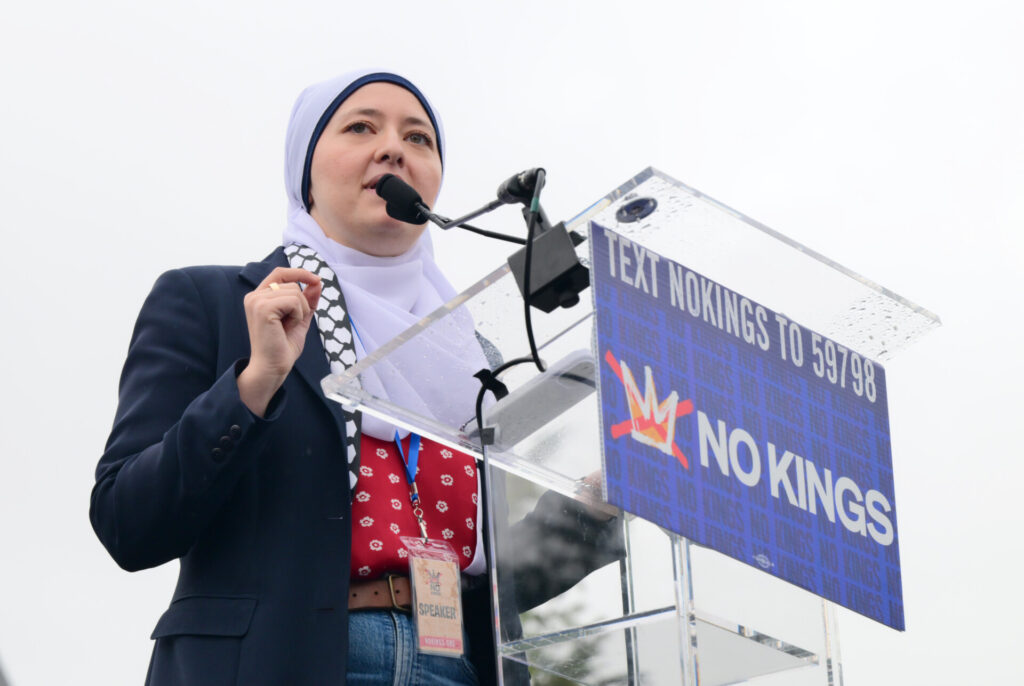
Another Democratic Georgia state representative, Ruwa Romman, the only Palestinian American in the legislature, argued in an interview that Democrats don’t sufficiently lean into the type of argument Sanchez is making. Romman came to national prominence last August when national party leaders blocked her from speaking at the Democratic National Convention in Chicago.
“I think too many people get too timid about what [Democratic] values are, [and] we have crappy people that run as Democrats that aren’t really Democrats, and then it makes all of us, the rest of us, look bad,” she told New Lines, arguing that Democrats failed to reach their base turnout targets in the 2024 election.
Sanchez’s advice for the Democratic Party is that the way to win is to push harder on core values. “A lot of people see Democrats as elitist or bad on the economy, stuff like that. When in reality we could be different if we just fought for the issues that we truly believe in … like housing, like health care, like an economy for all,” he said, adding that the party should be championing things like legalizing marijuana, which is increasingly popular.
But whether or not the party listens to his advice, his election to the legislature was already a win for him. During his campaign for public office, he was working at a local restaurant. His victory granted him access to health insurance, thanks to the public benefits offered to state lawmakers.
In many ways, Cobb is a bellwether for the rest of the state, which is similarly diversifying.
Demographic shifts in Forsyth, a Republican county northeast of Atlanta, are in some ways even more dramatic. Forsyth had historically been known as one of Georgia’s most racist counties. That reputation took root in 1912, when a series of events led to the expulsion of the county’s more than 1,000 Black residents.
It all started when a white woman named Ellen Grice claimed that she had awoken to the sight of a Black man in her bedroom. A few days later, a white woman named Mae Crow was found brutally beaten; a month later she died.
African-American men were collectively held responsible for these crimes, and one of them was lynched by a mob while two more were executed by the state. Many white Georgians felt uneasy living among African Americans. The “night riders,” a white supremacist gang, helped drive the entire Black population out of the county by attacking African-American homes and burning their churches. They left their property behind, which was expropriated by various white families. It wasn’t the first expulsion in the county; the area was also one of the launching points of the Trail of Tears, the forced relocation in the 1830s of Native American tribes from their ancestral lands in the southeastern U.S. to Indian Territory (present-day Oklahoma) — a process that resulted in the deaths of an estimated 15,000 Indigenous people.
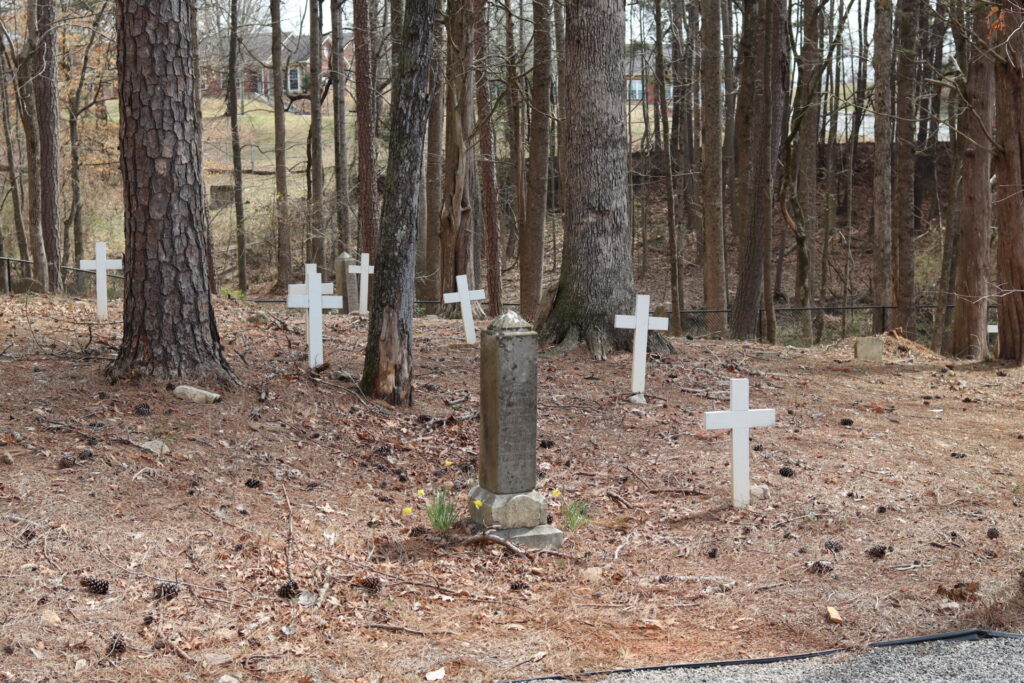
For decades after, almost no nonwhite people came to live in the county. Even after the passage in 1964 of the Civil Rights Act, which made segregation illegal, few minorities wanted to risk setting foot in Forsyth County. This was true even after the establishment of Lake Lanier, a man-made body that accelerated development and made the county prosperous.
But in 1987, the television host Oprah Winfrey brought her show down to the county to cover growing civil-rights protests in the area. The civil-rights activist Hosea Williams had marched through Forsyth to celebrate the relatively new Martin Luther King Jr. holiday. His roughly 75 supporters were met by a crowd of hundreds of klansmen and their backers, many of whom pelted his march with rocks and bottles. Undeterred, Williams came back with 20,000 marchers for a second demonstration.
Winfrey wanted to know what life was like in a county that hadn’t settled a single Black resident in dozens of years, and was resisting a minority presence for decades after the Civil Rights Movement. She found herself shocked as she interviewed white residents who said they simply didn’t want Black residents in their county. It was as if Forsyth was still living in a bygone era.
Yet driving through Forsyth today, you would be hard-pressed to believe that it was ever a hub of white nationalism. While over 60% of the population is white, the rest is a mix of Asians (over 20%) and Hispanics (10%).
Indian Americans are an especially large group; they started migrating into the county in the past decade as the technology industry took root. The exact number of Indian Americans in the county is unknown, but they represent the majority of the more than 50,000 Asians the census reports now live there. The current head of the Forsyth County commission is also an Indian American.
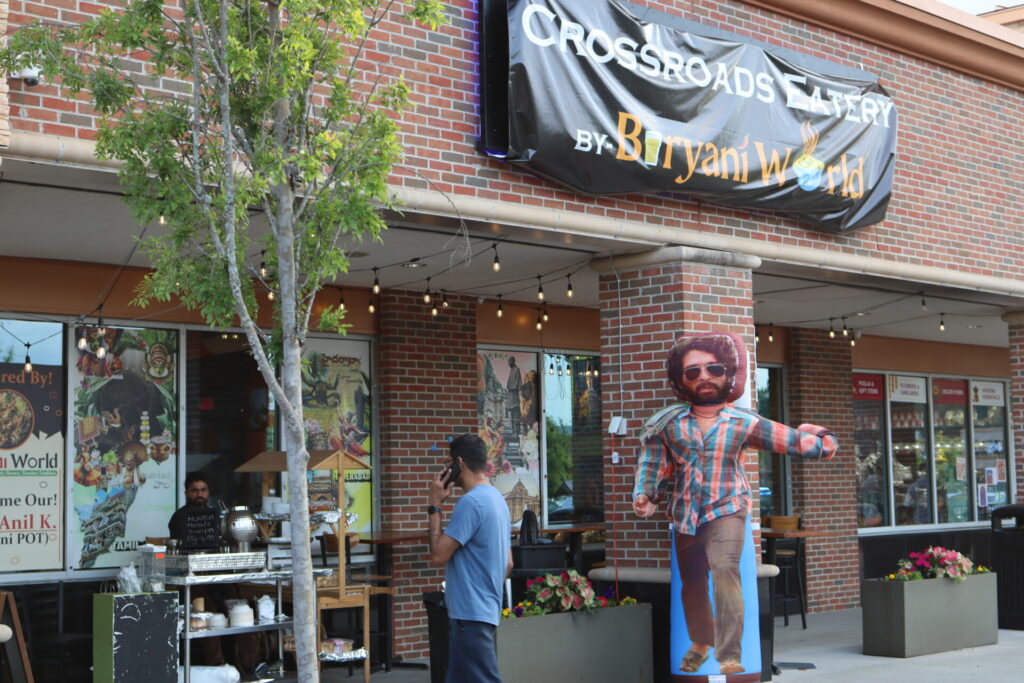
Kannan Udayarajan, the chair of the Forsyth County Democrats and an Indian American himself, has his own measure of how the population has grown. When he moved to the area from India in 2007, there was only one Indian restaurant.
Now, he told New Lines, “there’s 45-plus!”
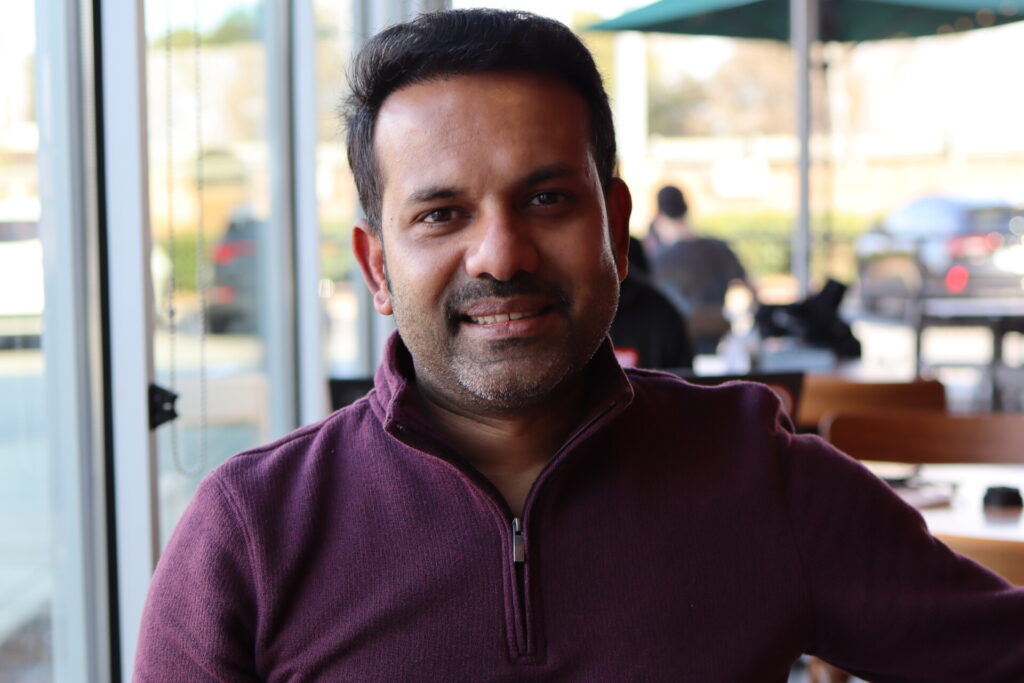
Udayarajan said that the preponderance of tech jobs, as well as affordable homes and strong schools, helped attract the Indian population to Forsyth.
His experience has been nothing like what one might expect, given the county’s history. “Professionally, interactions in the communities, everything has been positive for me,” he said.
That isn’t to say that flashes of the old Forsyth County don’t appear from time to time. He recalled that a proposed Hindu temple was protested with signs that appeared all over the county emblazoned with the phrase “No red dots.”
Sometimes, lingering prejudices can be even more direct. Richard Rabindran, an Indian-American student who attends the University of Georgia and lives in Forsyth with his family, told me that his parents experienced a road rage incident in which a white man hurled racial invective at them. “He kept making gestures, like he would go out onto the street, kept making gestures like he was defecating on the street,” he said.
Rabindran, whose family is Christian, has also faced discrimination from within, as local Indian Americans from different religious affiliations have sometimes ostracized them.
None of this, however, has kept the Indian-American population from booming within the area. Driving through South Forsyth County, one sees the landscape littered with shops, eateries and other small businesses owned by South Asians.
Compared to Cobb, however, there is one important difference. When you step into an Indian restaurant in cities there, like Marietta or Smyrna, you notice a diverse clientele. Sometimes, white people outnumber Indian customers. In Forsyth, the Indian restaurants are notably segregated. White customers are rare. “I don’t think we’ve gotten to that level yet, where we’re all going to be eating at the same place,” Rabindran said.
While the Indian population is booming and Latino numbers remain sizable, there’s one minority group you still won’t find many of in Forsyth County. Less than 5% of the county’s population is Black. That’s unusual for a county that is a short drive from Atlanta.
Virtually all of the multiple Black residents I spoke with in the county told me they love living there, but they were also quick to say that their Black friends and family were shocked they’d ever consider a home in Forsyth because of its historic reputation.
“The people have been very nice, for the most part,” said Jonathan Hall, a Black man originally from Oklahoma City who works as a consultant in the county.
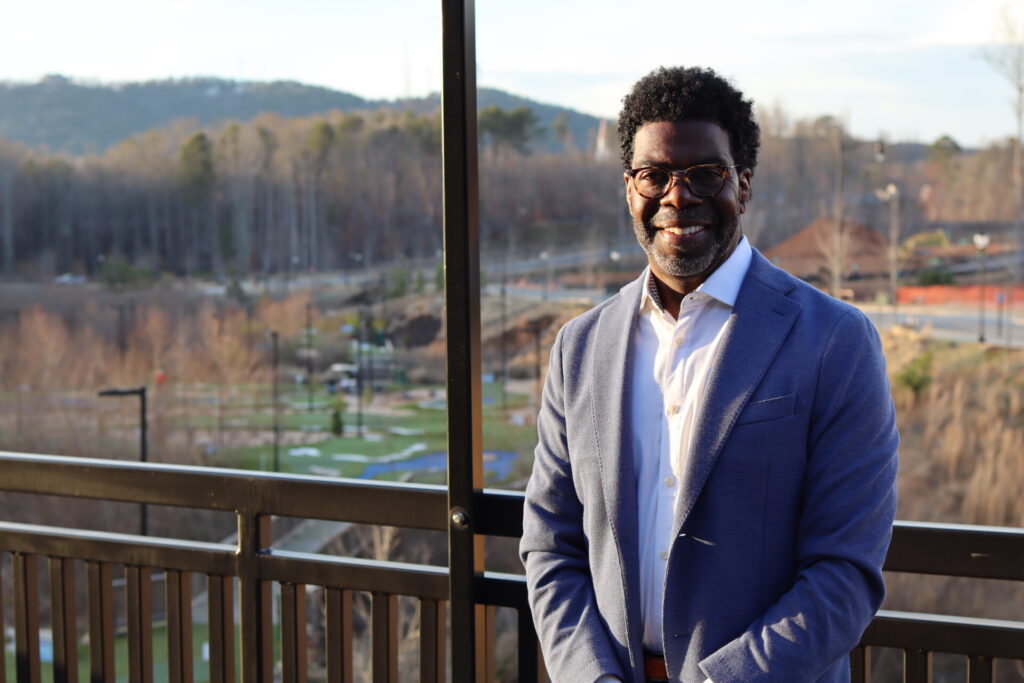
Like many current Black residents, his family was drawn to the county because of its reputation for good schools and beautiful landscapes.
He’s also one of the founders of Brothers of Forsyth, a social group for Black men in the county who come together to support each other and build relationships with county leaders.
One of their challenges is to convince more Black people to take the plunge and move to the area. “So you say to somebody who lives in Atlanta, African American, and say, ‘Why don’t you live in Forsyth County?’ They’re like, ‘Why would I add a layer of racism to my life?’” he explained.
Many of the county’s white residents, however, resist this perception. Cindy Mills, a former Forsyth County commissioner, was one of the residents in the audience when Oprah did her show from the region decades ago. “I was more on the defensive side, when people would say bad things about the county, I was more protective of the county because I had never had any ill will towards anyone of color,” she told New Lines.
Thomas Russell, a white resident who was born in the county in 1947, had also attended the Oprah event in 1987 and had a similar takeaway. “She called us bigots, and that’s the farthest from Forsyth County you can get, is being a bigot,” he said.
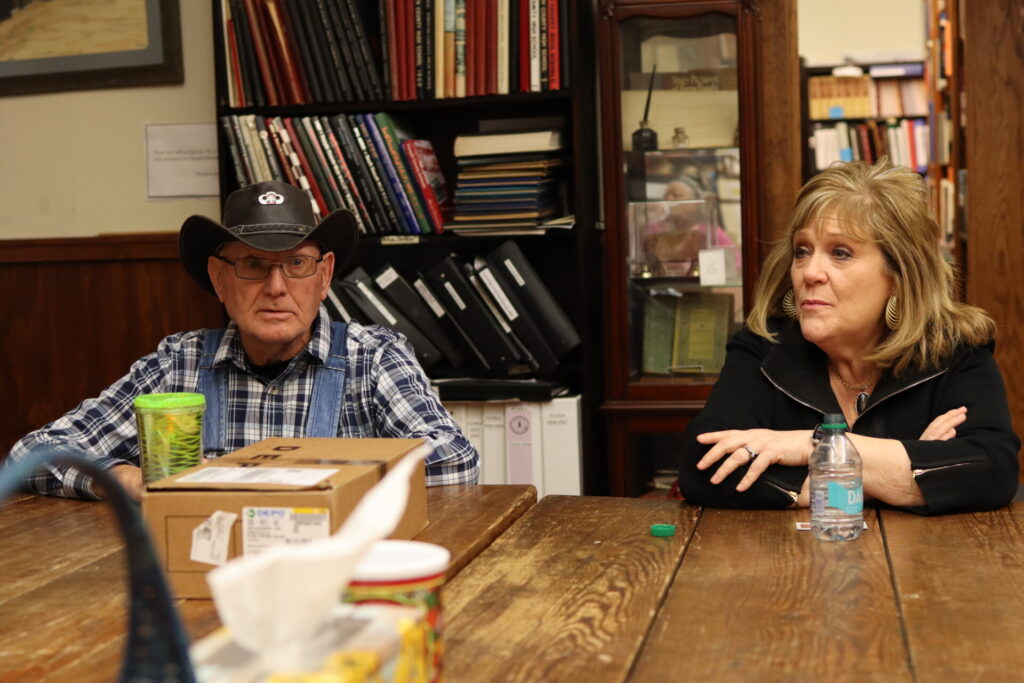
I met Mills and Russell in a room at the Historical Society of Cumming/Forsyth County, which had assembled a diverse group of residents to come speak with me. All of the Black residents who attended the meeting said they loved living in Forsyth, but their praise came with an asterisk.
Mark and Kimberly Boyd, a Black couple, moved into the county in 2007. When they made the decision to move, they had no idea about the racist history — they just wanted to live in a place with low taxes and good schools.
But the night they moved in, they happened to watch the Oprah episode about Forsyth. For Mark, in particular, this caused anxiety. He had grown up in Illinois in the 1960s and had personally been through the process of racial integration in schools. He had experienced vulgar racism firsthand early in his life. After coming to live in Forsyth, he occasionally had to relive his trauma because of things his kids encountered.
Mark and his wife told the group that after moving into the county, their kids had been called the N-word and ugly names in school and on the bus. This prompted them to alert school officials and work with counselors to get their children help.
But the Boyds have also had positive experiences in the county. They opened up a bakery together, not knowing what sort of reception they would get from the locals. “We didn’t know if we were going to be embraced or if folks would come and just burn our store down,” Kimberly said. “And every fear that we had as [business owners] not only got demolished — we have been loved on.”
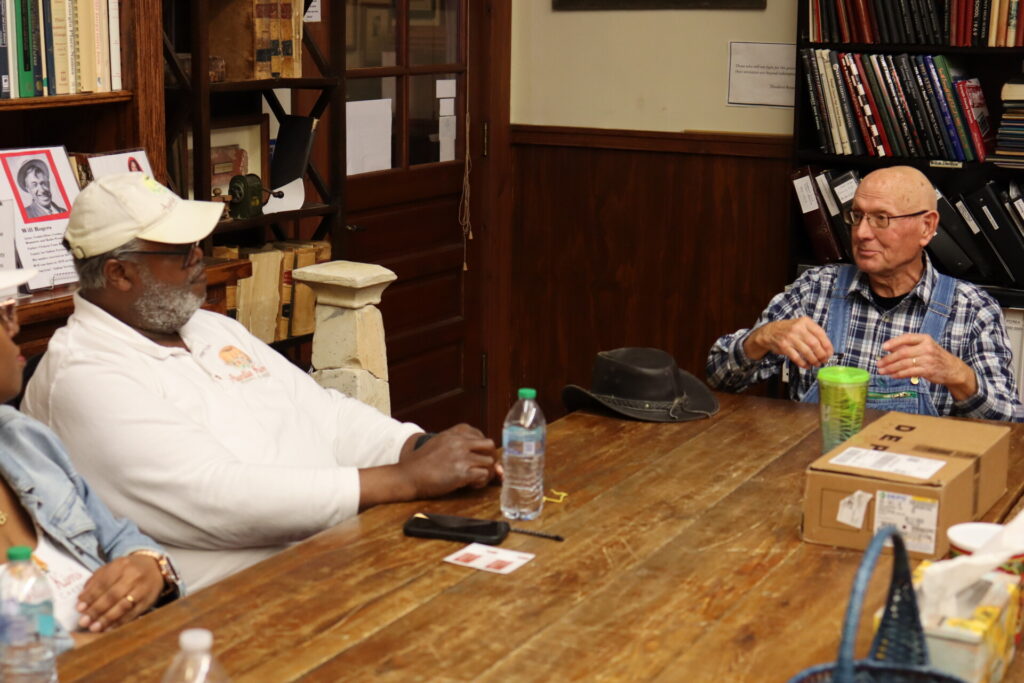
She even positively contrasted her experience growing up in California with how life is now in Forsyth County. “I’m coming from California. We don’t even talk to our neighbors, right? And here in Forsyth, not only do they come talk to us, they check on us, love on us,” she said.
Their experience is an example of the contradictions of the state that Georgia is today. On the one hand, their children still encounter 1950s-style racial attitudes at times; on the other, it’s the most welcoming place they’ve ever lived, in many ways.
One reason for optimism that the latter might overcome the former was how congenial and understanding everyone at the meeting was. In a room packed full of white and Black residents discussing Forsyth’s racial history and current issues, nobody raised their voice. Nobody insulted anyone else. And everyone took pains to understand the other person’s point of view.
Russell, the elderly white man who described the pre-civil-rights Forsyth he grew up in as idyllic, explained that later in his life he started working in Atlanta alongside diverse co-workers; sometimes he was the only white person in the room. “I know how the cream filling in an Oreo feels now,” he recalled saying one time at a work meeting, drawing laughs from the room.
After a number of the Black residents had spoken, Mills offered a memory to explain how she understood their point of view. She mentioned that she once knew a Black man in the county who ran a nonprofit helping the poor. She had wanted to write a check to support his organization, so she told him she would leave it under her porch. When he refused, she was curious as to why he didn’t want it. “He said, ‘Whoa, no no no no no. I can’t come to your house and get that check. … You don’t know what it is to be a Black man and to come to your house and somebody see it,” he told her.
The experience humbled her. “I never thought about it. Like I never thought a thing. … It made me feel so bad. It did because I would’ve never even thought about that at all,” she said.
Georgia’s political and social destinies are beyond our ability to predict, but it’s clear that the fulcrum of the state will be the ring of counties around Atlanta. As the metro Atlanta area continues to grow and diversify, the state will continue to have to work through the growing pains that have been witnessed in places like Cobb and Forsyth.
But back in Cobb, Cupid argued that, whatever comes next, Georgia’s evolution doesn’t have to be a zero-sum game between traditionalist white conservatives and the growing minority population. “We really want the same things you want. We want good schools. We want a good economy. We want a place that’s safe to raise our family in,” she said.
It’s hard not to see the debates roiling the metro Atlanta area as a reflection of the debates going on in the country writ large. How do we balance the interests of long-time natives and newcomers? Can a culturally and ideologically diverse polity work together toward shared goals?
If places like Stone Mountain, Cobb and Forsyth — all of which were once bastions of explicit white supremacy — can diversify and thrive, it suggests that America can do the same.
This article was supported by the Us@250 fellowship at New America.
Sign up to our mailing list to receive our stories in your inbox.



